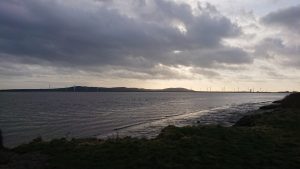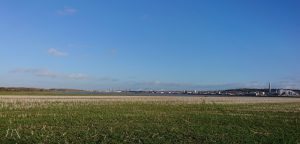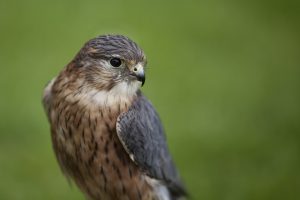Wednesday, 21st December 2022 – the winter solstice, the shortest day of the year; soon, the evenings and mornings will be lighter and the birds will be singing and courting again. For now, though, I am making the most of this glorious sunny day to enjoy a last visit of the year to Hale – and today I am not alone.
Birding is usually easier with two pairs of eyes – and definitely with a scope. I can’t get to grips with scopes – too heavy, too unwieldy, too difficult to focus quickly – so the fact that my birdwatching companion has brought his is a big bonus. As is the fact that he was here yesterday and knows where to find brambling, merlin and golden plover (three birds I’ve not ‘ticked’ so far this year, and time is running out).
We stop at all the usual places, starting with the first field. Bird seed has been scattered liberally here and further along the way, attracting good-sized finch flocks. Chaffinch flit down to the ground from the nearby naked trees, their white wing bars and tail feathers flicking and flashing. There are one or two greenfinch amongst them, with duller, olive-y plumage and thicker beaks. Goldfinch and linnet fly together, tinkling gently in the cold air. The scope(r) picks out a kestrel hovering over the field nearest the Mersey, where Canada geese graze, and I spot a small flock of pink-footed geese heading over the river.
Moving on, we find thrushes: blackbird, mistle thrush and redwing foraging in a ploughed field, and fieldfare in the trees. A 50-strong lapwing flock passes silently over us – always a delight to see. Bri spots a tree sparrow, but it hurtles past too quickly for me to do anything other than acknowledge its presence. A robin watches us from the hedge – such bold birds that actively seek out human company – as we walk towards the next stopping point, where the brambling was feeding yesterday. Along the rutted tractor track, more bird seed has been spread and there are finches on it, but they are very flighty, and the spot is very exposed to the cold wind hurtling off the Mersey – although along the shore it seems less strong – so we carry on.
There is movement in the stubble field near the end of Within Way. At first, it is difficult to pick out the birds as they weave their way through the tall, pale stubble, blending in perfectly with their surroundings. It is only when they straighten up that we know they are curlew – overwintering here in this coastal region that is milder and more hospitable than their upland breeding grounds.
Although it is high tide, there is a small strip of exposed mud on Hale Shore, and a few waders are feeding there: black-tailed godwit, redshank and a dunlin. The golden plover flock were in the ploughed field opposite the reed beds, so we stand and stare and eventually the scope finds a solo bird. They are an attractive small wader with an unusual yellowy-bronze plumage (in winter, minus the black face, throat and chest of their breeding finery) and what I think of as a ‘gentle’ face. Pleased with the sighting, we decide to turn back, rather than continuing the circular walk to the lighthouse and up Lighthouse Lane. I’m not keen on linear walks, but when there’s a second chance at two birds I’ve not seen so far this year, well, let’s turn around!
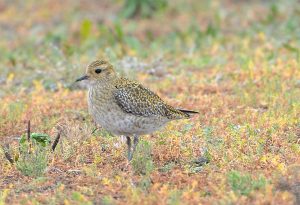
European golden plover – photo by Kev Chapman, CC BY 2.0 <https://creativecommons.org/licenses/by/2.0>, via Wikimedia Commons
A pretty female reed bunting calling softly from the reeds tells us we were right to do so, and the singing Cetti’s confirms it. There is a slight controversy regarding whether or not the latter can be added to the day list as it has not been seen, but then there’s another one of those ‘blink and you’ll miss it and what the heck was it, anyway’ birding moments, so, yes, apparently it can.
Back at the rutted track, the finch flock is still flighty – at first, we put it down to the human presence, but then Bri spots a merlin hurtling along the hedgerow across the field from us, which I miss. We give the flock plenty of time to settle down again, and I practise focusing the scope because picking out the female brambling (much less colourful than the male) amongst her chaffinch relatives is a nightmare, and, finally, there she is.
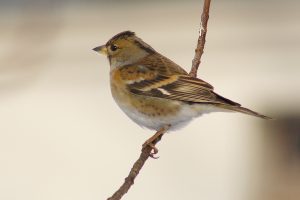
Female brambling – photo by Marcin Moga, CC BY 2.0 <https://creativecommons.org/licenses/by/2.0>, via Wikimedia Commons
And then, here is the merlin again, surprising us and the finch flock with a stealthy, sparrowhawk-like approach from the adjacent low hedge. Its gunmetal-grey back is turned to us as it banks and then shoots off into the bare trees at the field’s far edge. These are the closest views either of us have ever had of this magnificent little raptor and definitely a fantastic way to end a late morning’s birding on the winter solstice.

